112. Today in 1920s Turkey: 17 September 1924 (Heart-Break Seamstress in Three Takes)
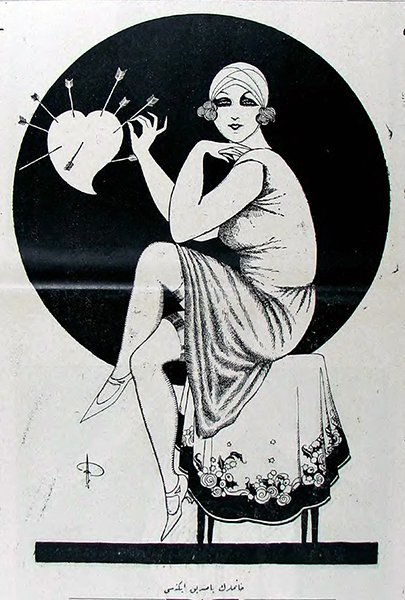
Fig. 1: “Hanımların yastık iğnesi” (“Women’s Pin-Cushion”) cartoon by Ramiz, Papağan or “Parrot,” 17 September 1924, no. 22, page 1.
Today’s post features a three-cartoon series published in the same issue of the biweekly journal, Papağan or “Parrot.” Each of the three cartoons occupies a separate page of the four-page digest, the first of which is included above. While the cartoons are not labeled in any way relating them to one another, their serial nature is discernible from certain qualities that they all share—setting them apart from the numerous other illustrations that cohabit the pages with them.
The second cartoon, included below, begins to provide some common themes for the viewer to follow such as sewing and love, as represented with the heart. The centrality of the short-haired, raccoon-eyed woman is also matched with seated poses and simple dresses in both examples.
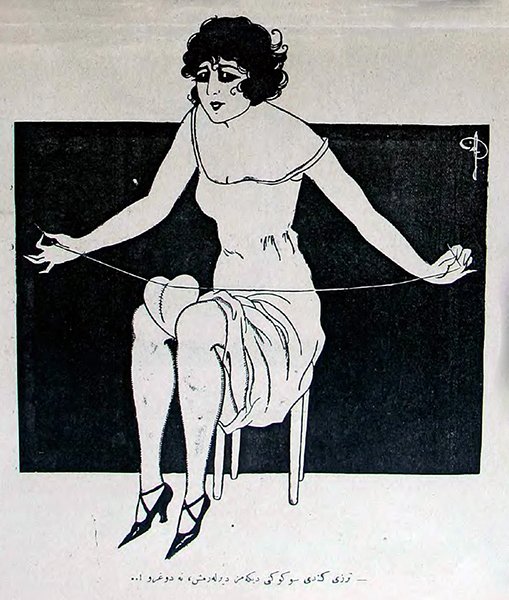
Fig. 2: “Terzi kendi söküğünü dikemez derlermiş, ne doğru!..” (“They say a tailor can’t sew her own tear, how true!..”) cartoon by Ramiz, Papağan or “Parrot,” 17 September 1924, no. 22, page 2.
The final cartoon continues to include a central, seated female figure, although this time the allusion to sewing is made with the sharp scissors wielded by her left hand (fig. 3). In this case the prominent heart featured in figures 1 and 2 has been replaced with a cat seated precariously on the knee of the woman. All three images also contain large black backdrops against which the simple contours of the woman’s body are set. In figures 2 and 3 the backdrop is rectangular whereas figure 1’s is circular.
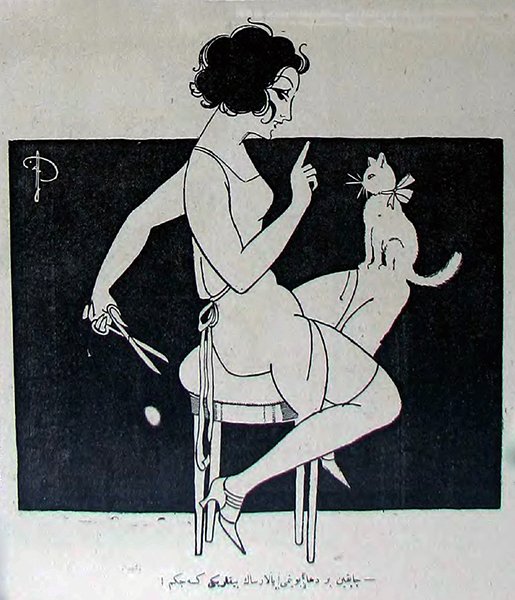
Fig. 3: “Çapkın, bir daha boynumu yalarsan bıyıklarını keseceğim!” (“You rascal, if you lick my neck one more time I’m going to cut your whiskers off!”) cartoon by Ramiz, Papağan or “Parrot,” 17 September 1924, no. 22, page 3.
Finally, all three cartoons bear the signature of the prolific artist, Ramiz. This explains the similar style, but Ramiz works in many different styles and definitely sticks to a single simple line and color-blocking scheme for all three compositions.
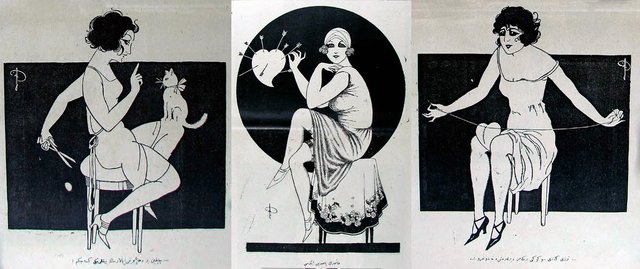
Overall, while the three images definitely constitute a series, it is unlikely that they narrate a specific story but perhaps sequential stages in a trope: the three phases of a relationship. The woman seems to be the same (if we assume the lighter-colored locks peeping out from under her hat in fig. 1 still indicates black hair) in all three frames but her clothes are slightly different. As such, figure 1 represents courtship and the hearts she targets in her search for love. Figure 2 represents the loss of a lover: compared to the first image, the woman looks sad and she is mending a broken heart. As the text below suggests, she is at fault for the failed relationship. The last in the series, fig. 3 demonstrates a complete resetting of emotions. As if instantaneous, the final frame displays a once again, care-free woman playfully suggesting that he was showing her unsolicited affection. Although her playful flirtation with the cat indicates her heart is mended, her threatening tone towards the anthropomorphized cat suggests she is not ready for a new lover… yet.
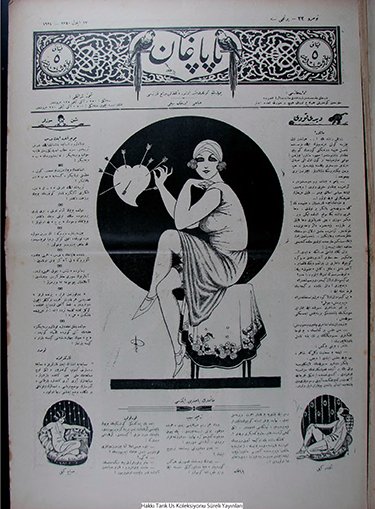
Fig. 4: Full page for Fig. 1.
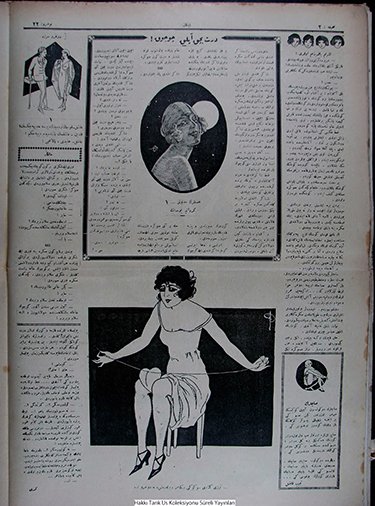
Fig. 5: Full page for Fig. 2.
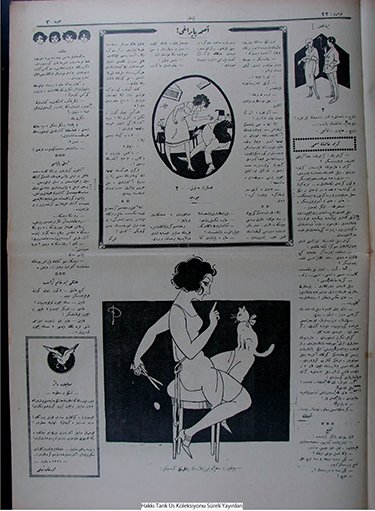
Fig. 6: Full page for Fig. 3.
This post received a 20% vote by @msp-turkey courtesy of @damla from the Minnow Support Project ( @minnowsupport ). Join us in Discord.
Upvoting this comment will help support @minnowsupport.
Yasemin bu paylaşımlar için çok teşekkürler :)
Birşey değil, okuduğun için de teşekkür!
This post has been modified, updated, and re-posted on 17 September 2018. Access the new edition here.